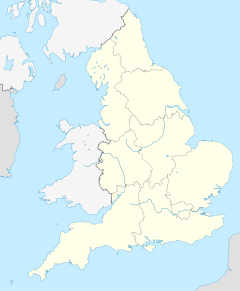Cliveden House
| Cliveden House | |
|---|---|

View looking north from the Ring in the Parterre showing Terrace Pavilion and Clock Tower to the left with Lower Terrace and Borghese Balustrade below
|
|
| Hotel chain | Iconic Luxury Hotels |
| General information | |
| Coordinates | 51°33′29″N 0°41′18″W / 51.558168°N 0.688258°W |
| Owner | National Trust |
| Design and construction | |
| Architect | Charles Barry |
| Other information | |
| Number of rooms | 47 (including Spring Cottage) |
| Number of suites | 15 |
| Number of restaurants | 2 |
| Number of bars | 1 (The Library Bar) |
| Facilities | Spa, Tennis, Gym, 376 Acres of National Trust Managed Grounds (including the Maze), Two Boats, Meeting Space |
| Website | |
| Official website | |
Cliveden (pronounced /ˈklɪvdən/) is a National Trust-owned estate in Buckinghamshire, on the border with Berkshire. The Italianate mansion, known as Cliveden House, crowns an outlying ridge of the Chiltern Hills close to the hilltop village of Taplow, just 2 miles (3.2 km) from the riverside town of Maidenhead. The mansion sits on banks 40 metres (130 ft) above the River Thames, and its grounds slope down to the river. Cliveden has been home to an earl, three countesses, two dukes, a Prince of Wales and the Viscounts Astor. Over the past decade, Cliveden has become one of the National Trust's most popular pay-for-entry visitor attractions, hosting almost 460,000 visitors in 2016.
As home of Nancy Astor, Cliveden was the meeting place of the Cliveden Set of the 1920s and '30s — a group of political intellectuals. Later, during the early 1960s, it became the setting for key events of the notorious Profumo Affair. During the 1970s, it was occupied by Stanford University, which used it as an overseas campus. Today the house is leased by the National Trust as a five-star hotel run by Iconic Luxury Hotels
Cliveden means "valley among cliffs" and refers to the dene (valley) which cuts through part of the estate, east of the house. Cliveden has been spelled differently over the centuries, some of the variations being Cliffden, Clifden, Cliefden and Clyveden. The 375 acres (152 ha) gardens and woodlands are open to the public, together with parts of the house on certain days. There have been three houses on this site: the first, built in 1666, burned down in 1795 and the second house (1824) was also destroyed by fire, in 1849. The present Grade I listed house was built in 1851 by the architect Charles Barry for The 2nd Duke of Sutherland.
...
Wikipedia


